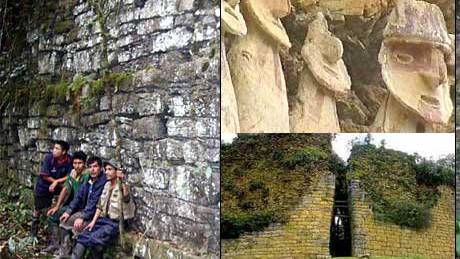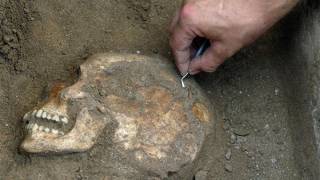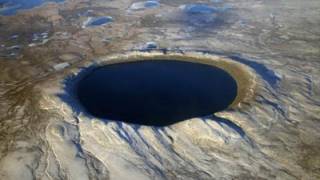Discovery could bring Peru's 'cloud warriors' to earth
Source: usatoday.com
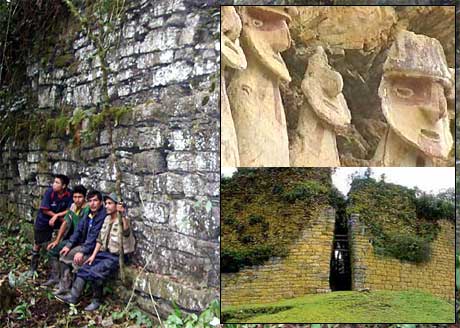
More images, slide show from usatoday.com: Chachapoya's the 'Cloud Warriors'
A massive ruin offers fresh clues about the culture of Peru's vanished Chachapoya, the "cloud warriors" who battled the Inca Empire more than 500 years ago.
Best known for building mountainous cliff-side tombs and filling them with bundled mummies, the Chachapoya (cha-cha-POY-ah) were once rulers of the northern Andes. Aside from cliff tombs and stone houses, they have left archaeologists few large ruins to study.
Until now.
The ruin was first discovered in August by Peruvians, four local men, who live in the remote, heavily forested area. They got in touch with Keith Muscutt, a scholar and author they knew because he has explored the region for three decades and is godfather to some of their children. Muscutt, an expert on the Chachapoya, is the author of 1998's Warrior of the Clouds: A Lost Civilization in the Upper Amazon of Peru.
"I was shown to what seems likely the biggest free-standing Chachapoya structure in the world, and just about in the last place I would ever expect it," says Muscutt, an assistant dean at the University of California-Santa Cruz, who described the site last week at the Institute of Andean Studies meeting in Berkeley, Calif.
The structure was nicknamed the "Huaca la Penitenciaria de la Meseta" (The Penitentiary) by its discoverers because of its tall stone walls. It consists of two rectangular ceremonial platforms on one side of a plaza in the middle of a plateau called La Meseta — not the mountaintops usually associated with the Chachapoya — about 6,000 feet above sea level on the eastern side of the Andes. The site, likely a town or ceremonial center, has been covered for centuries by forest.
"Extraordinary, a real head-scratcher, so enormous and isolated, it doesn't compare to anything else," says archaeologist Warren Church of Columbus (Ga.) State University. "The structure is mystifying, rather austere and blocky, unusual for the Chachapoya."
Broadly rectangular, the largest platform is 24 feet high, 200 feet long and 100 feet wide. Atop it are the remains of small homes or ceremonial buildings. A second building, 30 by 60 feet, abuts the main one, holding the apparent remains of a lookout tower.
Below, a plaza, about 200 feet wide and 300 feet long, rests on 12-foot-high walls. Marked by a distinctive Chachapoya frieze, smooth stones sandwiching rocks zigzagged in traditional Chachapoya fashion, the site was measured by Muscutt in August, but no other exploratory work has been done. Muscutt has registered its location with Peruvian authorities, he says, who will control any archaeological work on the site.
The Chachapoya, one of South America's little-known pre-Columbian civilizations, ruled northeastern Peru's Andean mountaintops until their conquest by the Inca around 1475. Spanish conquest of Peru in the 1500s wiped out the rest of their civilization. The high forests surrounding their homeland differ from the Amazonian rainforests most often associated with South America, Muscutt says, but offer equally impassable and difficult terrain.
The find upsets conventional thinking about the ancient Chachapoya kingdom, Church says, suggesting its mountain people had more extensive links to the Amazonian lowlands than previously supposed. The structure was likely last used at least five centuries ago, he suggests, when the region was heavily depopulated by the Inca and Spanish conquests.
One smaller, squared-off Chachapoya structure exists at a mountain site called Pirca Pirca. Honeycombed with rooms, that site has been extensively looted. Muscutt says the new site is too overgrown to tell if any inner chambers exist.
Muscutt is working with The Discovery Channel to plan an archaeological investigation of the ruin, which will require a large team due to its size. The site will be featured in a Discovery Channel documentary series, Chasing Mummies, planned for next year.
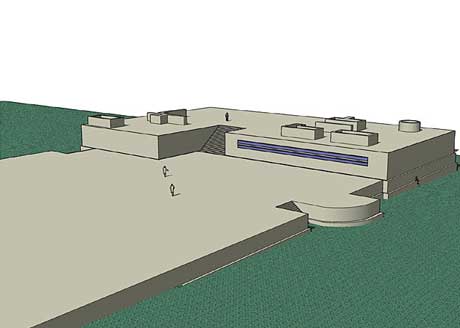
Chachapoya Ruled High-Altitude Roost
Reigning from mountain citadels in a region marked by circular hamlets and cliffside tombs, the ancient Chachapoya ruled the Amazonian Andes from about 800 to 1475 A.D.
Conquered by the Inca, even their name was obliterated, leaving behind what the Inca called them, Chachapoya, which basically means "cloud people." Even the mountain-dwelling Inca saw the Chachapoya as living at remarkably high altitudes, amid the mist-draped mossy forests hugging the sides of the northeastern Andes.
Fiercely resistant to the Inca conquest, the Chachapoya are often called the "cloud warriors" in popular accounts.
When it comes to legacies, the Inca still have an edge on the Chachapoya. The Inca city of Machu Piccu, discovered in 1911, is now a tourist mecca, while the colossal Chachapoya citadel of Kuelap, discovered in 1843, languishes in obscurity. The Chachapoya leapt back into the public eye in 1996 when looters uncovered hundreds of mummy bundles from the Chachapoya site called Laguna de los Condores, or Lake of the Condors.
"The extraordinarily well-preserved mummies and burial offerings salvaged by archaeologists offered researchers a unique opportunity," scholar Adriana von Hagen has noted. In particular, the Chachapoya practice of preserving their ancestors in garishly painted cliff tombs, unfortunately often pointing them out to looters, became better understood.
Like many pre-Columbian peoples, the Chachapoya involved their dead ancestors in festivals and rituals, says archaeologist Warren Church of Columbus (Ga.) State University. They preserved their dead in distinctive mummy "bundles" stuffed with cotton and removed them from their tombs for big events. The newly discovered platform ruin at La Meseta may have been a setting for just such rituals, he says.
More: http://www.chachapoyas.com/
Article from: http://www.usatoday.com/tech/science/
2007-01-16-peru-ruin_x.htm
